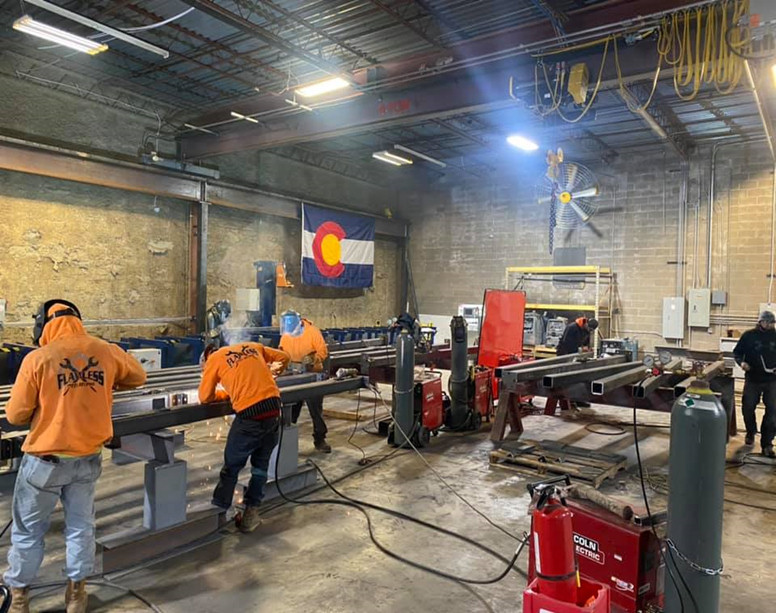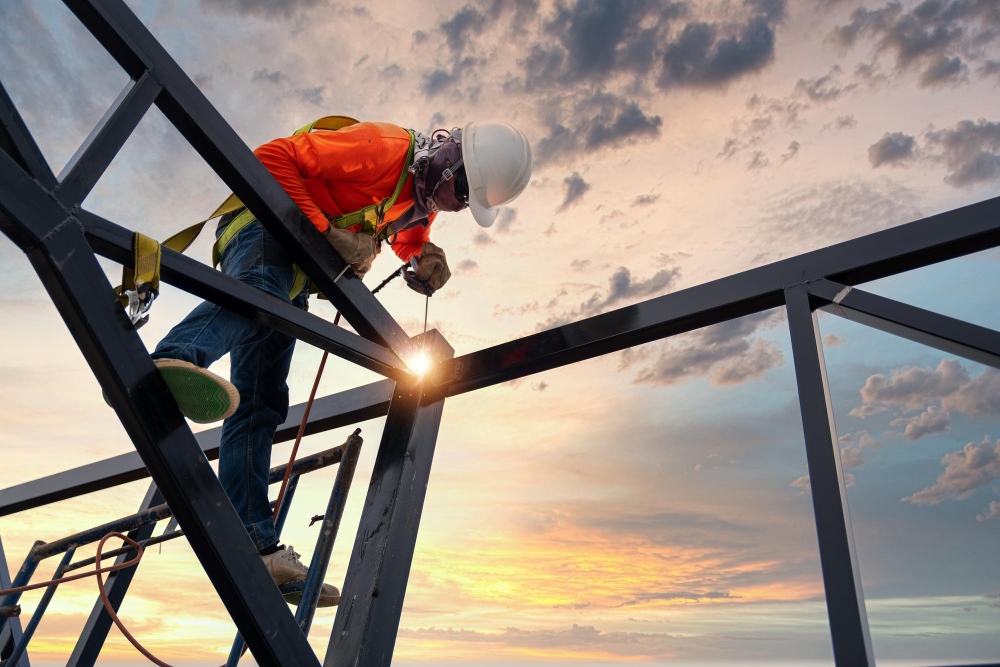Steel Fabrication Melbourne: Craftsmanship Meets Development
Steel Fabrication Melbourne: Craftsmanship Meets Development
Blog Article
Cutting-edge Fads in Steel Fabrication: Enhancing Toughness and Precision
In the world of steel construction, the search of sturdiness and precision has actually brought about a wave of ingenious trends that are improving the sector. From improvements in welding modern technologies to the assimilation of robotic automation in manufacture processes, the landscape of steel production is evolving swiftly. High-strength alloy development, paired with the usage of 3D modeling and simulation software, is pressing the limits of what is possible in terms of architectural integrity and accuracy. In addition, the growing focus on sustainable methods in steel manufacturing is not only driving efficiency but likewise cultivating a much more environmentally mindful strategy to construction. These trends are not just forming today however additionally preparing for the future of steel construction, assuring more improvements in longevity and precision.
Advanced Welding Technologies
In the realm of steel manufacture, the fostering of advanced welding modern technologies has actually considerably reinvented the industry's method to accomplishing premium high quality and precision in structural welds. Advanced welding modern technologies, such as laser light beam welding and friction stir welding, have arised as game-changers in the area. Laser beam welding utilizes a focused laser beam to join metal components with amazing accuracy and rate, making it ideal for elaborate styles and thin materials. On the other hand, friction mix welding produces incredibly solid bonds by mechanically intermixing the molecules of the products at the joint, removing the need for thawing the metal. These innovations supply numerous advantages, including lowered heat-affected areas, very little distortion, and boosted mechanical residential or commercial properties in the bonded joints. By leveraging these innovative welding methods, steel producers can elevate the sturdiness, stamina, and precision of their structural welds, satisfying the increasingly requiring requirements of modern building and construction jobs.
Robotic Automation in Construction
Welcoming robot automation has come to be a cornerstone of contemporary steel fabrication practices, improving procedures and enhancing performance across the sector. Robotics are reinventing the method steel components are made, offering exceptional precision and speed while lowering human error. These automated systems can manage repeated tasks with regular precision, bring about higher top quality final product.
One trick advantage of robot automation in steel construction is the capability to work all the time without tiredness, dramatically enhancing manufacturing result. This continuous operation lessens downtime and increases task timelines, inevitably conserving costs for makers. In addition, robotics can be programmed to execute intricate tasks that may be tough or unsafe for human workers, boosting safety and security in the workplace.
Additionally, robotic automation makes it possible for seamless combination with other electronic modern technologies, such as computer-aided layout (CAD) software application and Web of Points (IoT) systems (Alpha reo). This interconnected approach enhances interaction in between different phases of fabrication, enhancing workflows and making sure real-time tracking and control. As the steel construction sector remains to develop, robot automation stands apart as a transformative force driving performance and accuracy in producing processes

High-Strength Alloy Advancement
The development of high-strength alloy advancement in steel construction is improving the market's approach to boosting material longevity and performance. High-strength alloys are engineered to display premium mechanical residential or commercial properties, such as increased tensile strength, toughness, and corrosion resistance compared to traditional steel qualities. By incorporating these sophisticated alloys right into construction procedures, manufacturers can generate parts that endure greater stress degrees and harsh settings, bring about even more dependable and long lasting output.
One secret benefit of high-strength alloy development is the capability to lower material density without endangering structural honesty. This not just causes lighter-weight components yet also adds to cost financial savings find out here now and boosted effectiveness in fabrication and setting up processes. The enhanced strength-to-weight proportion of these alloys enables for the other layout and building and construction of frameworks with greater load-bearing abilities while minimizing overall weight.
3D Modeling and Simulation Software Application
Developments in steel manufacture procedures have been dramatically propelled by the assimilation of sophisticated 3D modeling and simulation software application devices. These devices permit makers to create comprehensive online versions of their projects, allowing them to visualize the end product with accuracy prior to any physical job starts. By mimicing various anxiety variables, environmental conditions, and architectural lots, fabricators can enhance layouts for enhanced toughness and efficiency. Additionally, 3D modeling and simulation software application enhance the production process by determining prospective concerns at an early stage, reducing the need for costly rework and reducing product waste.

Sustainable Practices in Steel Manufacturing
Integrating sustainable techniques into steel manufacturing processes is crucial for lessening ecological effect and guaranteeing long-lasting resource accessibility. One key sustainable method is the fostering of energy-efficient technologies to minimize greenhouse gas emissions during the steel production process. This includes making use of renewable resource resources, such as solar or wind power, to power steel plants and executing energy-efficient tools to optimize power use.
Another vital aspect of sustainable steel production is the liable sourcing of basic materials. This includes making certain that the iron ore and other sources used in steelmaking are acquired from honest and eco-friendly sources. By promoting openness in the supply chain and sticking to strict environmental requirements, steel makers can decrease the negative effects of resource removal on regional ecological communities and communities.

Verdict
In verdict, the ingenious patterns in steel fabrication such as advanced welding modern technologies, robot automation, high-strength alloy advancement, 3D modeling and simulation software application, and sustainable techniques are boosting the toughness and precision of steel products. These developments are revolutionizing the steel manufacture market by improving top quality, sustainability, and effectiveness. It is clear that the future of steel construction hinges on welcoming these innovative technologies to fulfill the needs of contemporary construction and production industries.
In the realm of steel manufacture, the quest of resilience and accuracy has led to a wave of cutting-edge trends you can check here that are improving the industry.In the realm of steel manufacture, the fostering of innovative welding technologies has significantly reinvented the sector's method to attaining exceptional top quality and accuracy in structural welds. As the steel construction sector continues to advance, robotic automation stands out as a transformative force driving performance and accuracy in manufacturing processes.
In addition, recycling and reusing steel scrap and waste products play a significant function in boosting the sustainability of steel manufacturing. metal fabrication melbourne.In conclusion, the ingenious patterns in steel manufacture such as innovative welding innovations, robot automation, high-strength alloy development, 3D modeling and simulation software program, and lasting practices are boosting the sturdiness and accuracy of steel items
Report this page